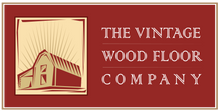Annoying floor squeaks in new floors typically occur after the house has settled and the lumber has dried completely. The flooring will respond to natural adjustments to weather changes, fluctuating interior temperatures caused by heating and cooling systems, and moisture changes. Traditional and reclaimed wood floors can develop squeaks from floorboards rubbing against each other, from loose nails or from loose subfloor materials. The first line of defense is to try to lubricate the boards with talcum powder or French chalk (sticks used by tailors to mark fabric). Locate the source and sweep the chalk in the cracks of the wood. Wipe clean. If the squeak is persistent and cannot be resolved with lubrication, use this simple trick to fix your squeaky floors.
If you have access to the subfloor from underneath, we recommend this easy method first. Locate the source of the squeak or creaking sound. You can set a heavy weight on the area above and then place a long screw into the subfloor securing it to the floorboard. Minimizing the space between to the two components will reduce the friction and the noise caused by the vibration between the two boards.
If you do not have access to the subfloor, select the correct screw for the sub floor material. Use a wood finishing screw (it will sink in lower than the edge that is flush to the floor) to tighten the connection and use matching wood putty to fill in above and conceal the finishing screw.
If these two simple methods don’t reduce the squeak, we recommend consulting a floor specialist to further investigate the source and solution using shims, cleats, bracing, gluing or a combination of all of these.


